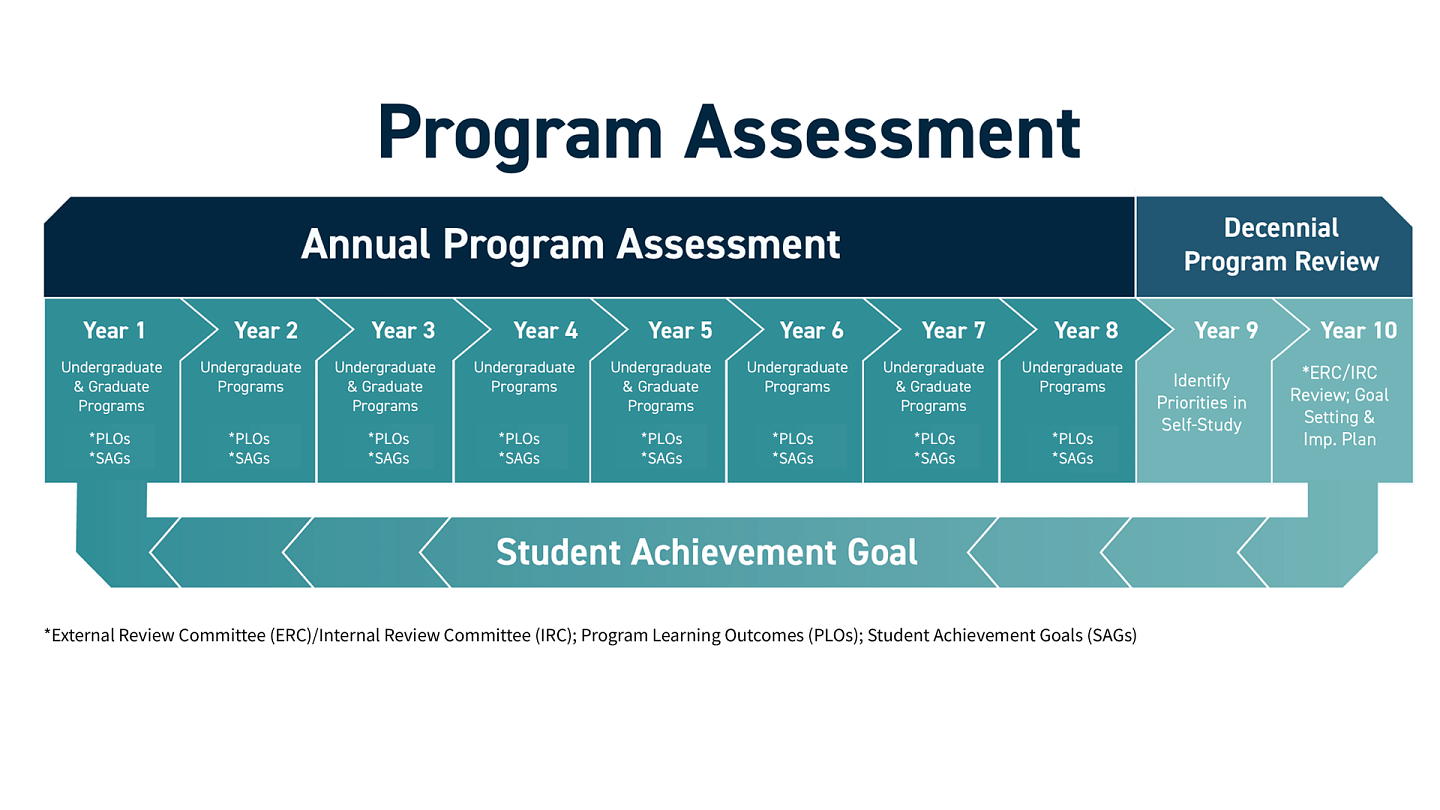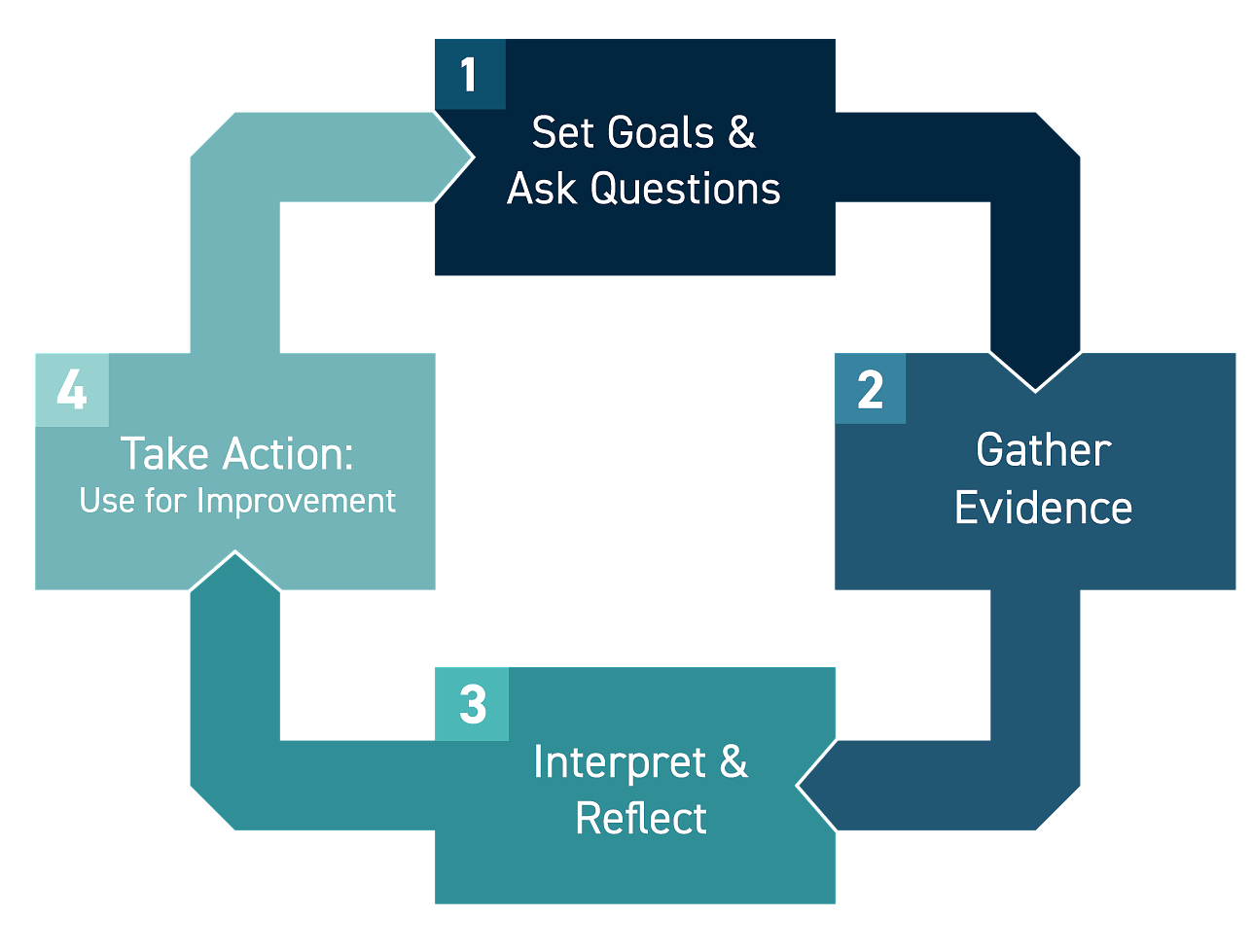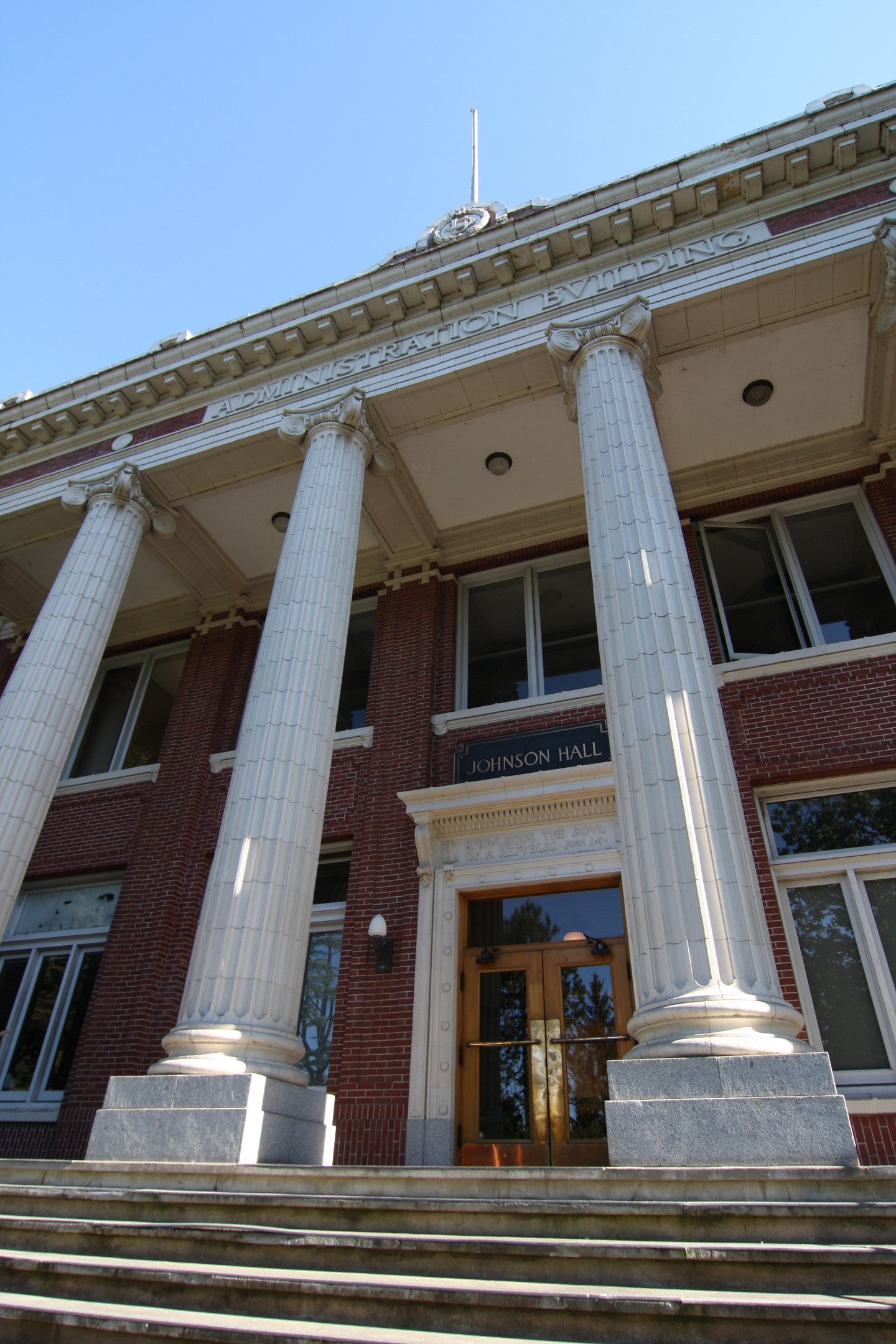
Program Assessment
Program Assessment is a framework that integrates UO's two main tools for assessing program performance and promoting continuous improvement in alignment with the university’s and unit’s strategic priorities. Its goal to help programs and departments reflect on performance and promote continuous improvement particularly in the areas of student learning and achievement and with a focus on closing equity gaps where they exist.
All unit level program assessment reports including annual assessment, decennial program review, and specialized accreditation reports have been migrated to unit SharePoint folders. Click here for instructions to access your SharePoint folder.

Principles
Program Assessment should be:
- Meaningful to academic units with goals that align with unit values, created through a collaborative approach
- “Right-sized” with clear guidelines allowing units to be incremental and efficient
- Action-oriented leading to programmatic changes rather than just documentation and reflection
- Data-informed using data to identify areas for improvement and track progress, but also recognizing that faculty expertise is a valuable form of data for assessment
- Faculty driven faculty should have input into and know what goals they are working towards
- Institutionally aligned considering university level goals and priorities when identifying unit level goals, priorities, and actions
- Focused on continuous improvement through honest, on-going self-reflection that leads to action
- Equity-minded focusing on closing equity gaps where they exist
- Systemic focusing on building sustainable processes for improvement that don’t rely on individual faculty alone.

Process
In this process, the role of the Office of the Provost is to:
- Provide structure and templates for school college leadership to track archive and manage program assessment tasks.
- Provide data and support in understanding data that allows units to reflect on and analyze performance in a meaningful way.
- Support faculty in creating meaningful goals for improvement that are institutionally aligned.
- Support faculty in meeting unit goals by providing resources for continuous improvement (E.g., TEP)
- Create a process that emphasizes improvement and streamlines reporting.
- Create a process that supports long-term goal implementation.
- Seek input from units to continually improve program assessment overtime.


Annual Program Assessment
The Annual Program Assessment will track and continuously improve student learning and achievement in our academic programs overtime. Programs will assess student learning and achievement in the context of the assessment cycle.
Each year programs will submit a brief report identifying progress in the assessment cycle since the previous report. For example, what questions they are answering, what evidence they gather, who is involved in interpreting evidence, what actions are taken, and what their next steps are.
Programs will report progress toward at least one student learning goal and one student achievement goal each year.
Student learning assessment may include:
- Assessment of program learning outcomes (as written in CourseLeaf)
- Assessment of other student learning goals (identified by programs)
Each year programs will submit a brief report identifying progress in the assessment cycle since the previous report. For example, what questions they are answering, what evidence they gather, who is involved in interpreting evidence, what actions are taken, and what their next steps are.Units are required to assess each program learning outcome at least once every 10-year Program Assessment cycle2.
Units will be responsible for creating a schedule for assessing program learning outcomes (schedules can range from assessing all outcomes in a single year or one outcome every couple of years). Years not focused on program learning outcomes are flexible and can focus on assessment of other student learning projects (Topical Assessment guides provide some examples). Programs can identify and report progress on more than one student learning goal in their annual assessment.
Student achievement assessment may include:
- Assessment of student achievement goal identified in most recent decennial program review
- Assessment of student achievement goal identified in 2023
- Assessment of other student achievement goal (selected by programs)
Annual assessment immediately following decennial program review will focus on the student achievement goal identified in the Decennial Program Review self-study and implementation plan. Programs not currently undergoing decennial program review will be tasked with identifying a student achievement goal in AY 2023. Assessment work toward a single student achievement goal may span multiple years if units can define their progress. Upon completion of step 4 “Take Action”, programs will set new goal(s) and begin the assessment cycle again. Programs can identify and report progress on more than one student achievement goal in their annual assessment. Details around Annual Program Assessment including instructions, templates, helpful guides and resources can be found on the Annual Program Assessment webpage.
Decennial Program Review
Program review is a decennial process that occurs over two academic years. It consists of the following elements:
1. Self-Study Report
2. External or Internal Review Report
3. Goal Setting and Implementation Plan
The Decennial Program Review process will result in the identification of 3-4 high priority areas of focus, a set of goals and implementation plan for achieving those goals – at least one priority area and goal must focus on student achievement, especially on closing equity gaps where they exist. Units will report on progress towards their student achievement goal as part of Annual Program Assessment.
Units that undergo a specialized accreditation process will be provided with a tailored program review that aligns with their specialized accreditation.
Details around Decennial Program Review including a unit level review schedule, process timeline, guidance documents and more can be found on the Decennial Program Review webpage.

Program Assessment and Regional University Accreditation
Program assessment is critical to meeting the North West Commission on College and Universities (NWCCU) Standards for Accreditation. Standard one - student success and institutional mission and effectiveness, asks that the university "demonstrates a continuous process to assess institutional effectiveness including student learning and achievement and support services"... that "the institution engages in an effective system of assessment to evaluate the quality of learning in its programs",... and that "the institution uses the results of its assessment efforts to inform academic and learning support planning and practices to continuously improve student learning outcomes." (Paraphrased from 1.B.1, 1.C.5, 1.C.7)
From a student achievement perspective, standard one requires that "the institution establishes and shares widely a set of indicators for student achievement including, but not limited to, persistence, completion, retention, and post-graduation success. Such indicators of student achievement should be disaggregated by race, ethnicity, age, gender, socioeconomic status, first generation college student"... to " promote student achievement and close barriers to academic excellence and success (equity gaps)" … and that such disaggregated indicators "should be used for continuous improvement"....and "to inform and implement strategies and allocate resources to mitigate perceived equity gaps." (Paraphrased from 1.D.2, 1.D.3, 1.D.4)
Program assessment serves as the formally established process at the University of Oregon for assessing student learning and achievement to meet NWCCU standards for accreditation.
